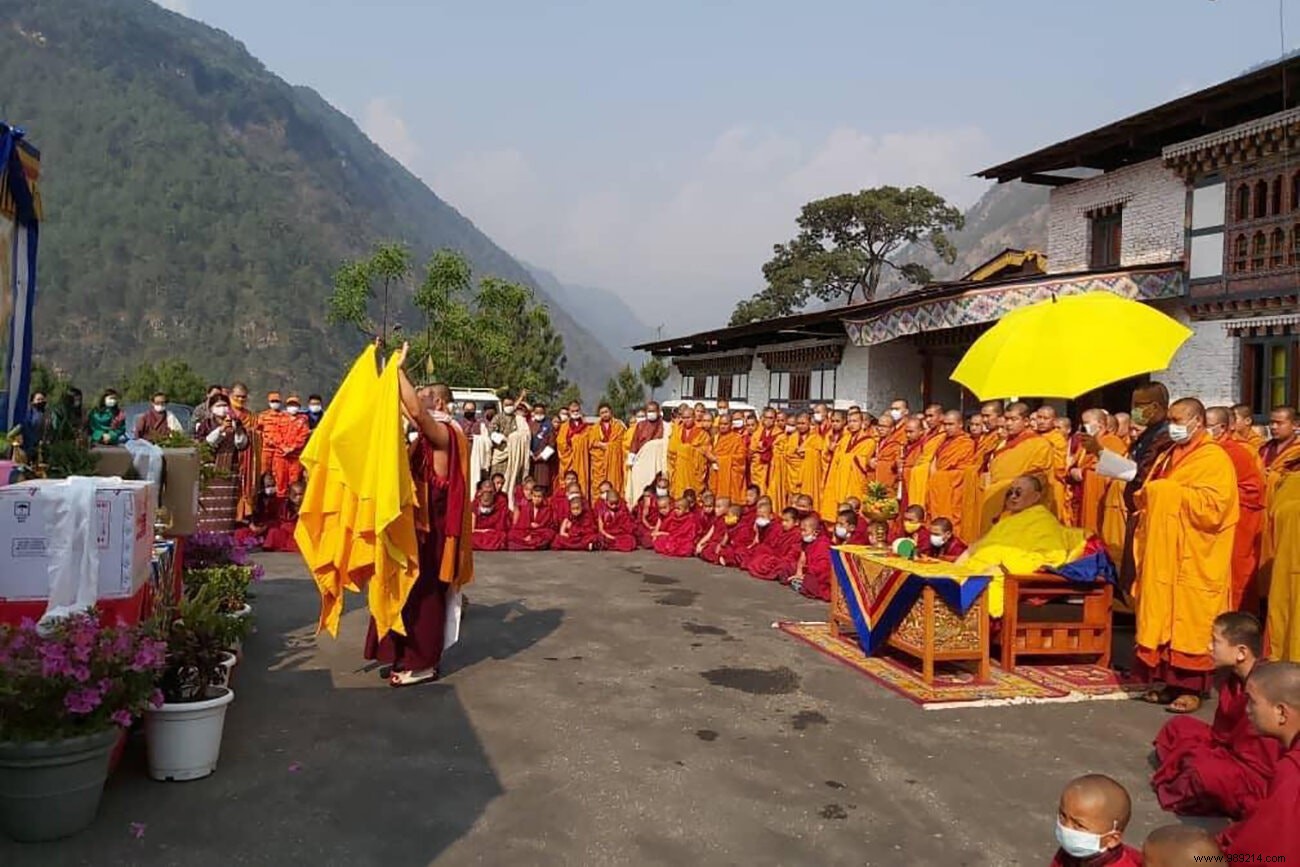Bordering the far west of China, Bhutan's Lunana region is home to some of the highest peaks in the world. Incidentally, the region is inaccessible by car. Yet most of its residents have already received their first dose of the coronavirus vaccine.
On Saturday, the Buddhist kingdom of Bhutan administered a first dose of the AstraZeneca vaccine to more than 478,000 people, or more than 60% of its population , including more than 93% of eligible adults. This vaccination rate was then the sixth highest in the world, higher than that of Great Britain and the United States. Note that all of these doses were offered by the Indian government where the serum is made.
The vast majority of these first doses were administered at approximately 1,200 vaccination centers in one week , end of March/beginning of April. Bhutan had waited to receive all its doses before starting to offer the first injections. But how do you get to the Lunana region?
Bordering the far west of China, the region dotted with glacial lakes and other Himalayan peaks is indeed inaccessible by car. To reach this population isolated from the rest of the world, a corps of eight volunteers known as the Peacekeepers who operate under the authority of the King of Bhutan Jigme Khesar Namgyel Wangchuck traveled to the site by helicopter.
The health workers then marched from village to village through the snow and ice equipped with their vaccines, tents and oxygen tanks. To save time, the team administered the vaccines during the day and traveled between villages at night (ten to fourteen hours of walking each time). On several occasions the tents were ransacked by yaks.
In addition to the damage caused by these Himalayan ruminants, health workers also had to deal with some villagers too busy harvesting barley or too worried because of the possible vaccine-related side effects. In the end, everything went perfectly.
"I got vaccinated first to prove to my compatriots that the vaccine does not cause death and is safe to take “, explains to the New York Times Pema, the village chief of Lunana. "After that, everyone here took their first injection “.
Vaccinations took place in the thirteen colonies of the region. By mid-April, 464 of Lunana's approximately 800 residents had received their first dose .

This "silent" vaccination campaign, carried out in one of the poorest countries in Asia, was necessary.
Health care is free, but the system is not "self-sufficient". Patients who need expensive or sophisticated treatments are indeed often sent to India or Thailand at government expense, according to Dr. Yot Teerawattananon, a Thai health economist at the National University of Singapore.
A government committee then meets once a week to make decisions on which patients to send or not to send abroad. Typically, the committee focuses on brain and heart surgery, kidney transplants, and cancer treatment.
However, the doctor believes that a small country like Bhutan could not have coped with an outbreak of severe Covid cases. This is why the emphasis has been placed on vaccination.
In addition to this campaign, the kingdom's borders have been closed for a year with a few exceptions and anyone entering the country must be quarantined for 21 days. So far, Bhutan has reported fewer than 1,000 Covid-19 infections and only one death.
The government plans to administer the second doses approximately eight to twelve weeks after the first cycle, in accordance with guidelines from the University of Oxford who developed the serum.